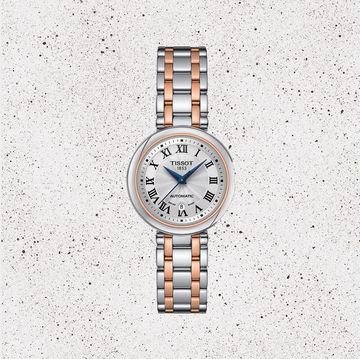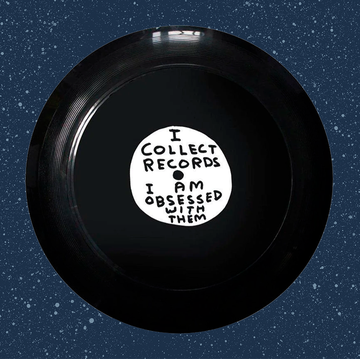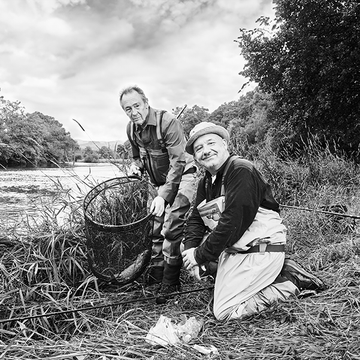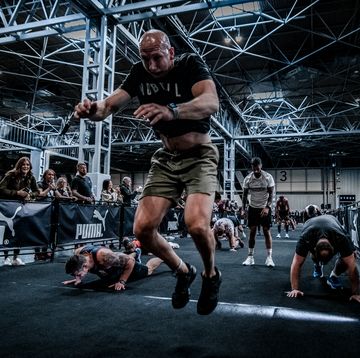It was the hottest Tour de France in years. For 21 days last July, the world’s leading cyclists fried beneath a scorching sun, particularly when they cut across the south, between the Pyrenees and the Alps. But no one felt the heat like Chris Froome.
Froome grew up in Africa, so it wasn’t the temperature that bothered him. It was the rumours and innuendo, the scepticism and suspicion that stalked him on his 2,000-mile trip from Holland then around France. He was jeered and spat at. During the 14th stage, a spectator yelled “Dopé!”, leaned into the road and emptied a cup over his head. The liquid splashed over Froome’s face and he could tell — or smell — that it was urine.
Following the stage, Froome, in the leader’s yellow jersey that he would wear all the way to the finish in Paris, blamed “irresponsible reporting” for convincing a significant and vocal number of roadside fans that he was the heir to the disgraced Lance Armstrong: a cheat and a doper. The French media were particularly sceptical — “Le Péril Jaune” (The Yellow Peril) said the headline in Libération. “Questions surround the phenomenal performances of Christopher Froome,” said Le Figaro. On French TV, the former rider Laurent Jalabert said Froome was “on another planet”, interpreted by most as a deliberate echo of a 1999 headline in L’Equipe about the bogeyman, Armstrong.
In France’s newspaper of record, Le Monde, a man who has come to be Froome’s nemesis, the coach-turned-journalist Antoine Vayer, went even further: “Chris Froome will not win a third Tour de France if his equipment is checked at the right time and in the right place. It also remains for us to study his ‘exceptional’ and ‘special’ capabilities in laboratory conditions, which has never been done.”
Vayer has been voicing his suspicion since Froome won his first Tour in 2013, but now he was suggesting something more sinister than performance-enhancing drugs — that Froome wasn’t cheating by putting something in his body, but in his bike: a motor.
More challenging than anything Froome had to deal with on the road was this more insidious and opaque opponent: suspicion. There can be no more vivid an illustration of how contaminated the event has become than the fact that merely winning can elicit suspicion, distrust and a refusal to believe. In part it is the legacy of Armstrong who was stripped in 2012 of his seven “victories”, but still, as the sport’s self-proclaimed Voldemort, casting a long, dark shadow.
“What more can I do, as a clean athlete?” asked Froome towards the end of the Tour. Some responded that he could release data about his performances and physiology. The debate focused in particular on Froome’s ability in his favourite terrain, the mountains, where various sports scientists and armchair experts were able to calculate his power output — to varying degrees of accuracy — and decide whether they believed it was plausible or not.
Vayer was one of these experts, though whether he is a scientist or an armchair expert is also subject to debate. He was a trainer for Festina in the Nineties, the team at the centre of a huge doping scandal in 1998. Vayer wasn’t involved in doping the team, but he was able to measure the effects of doping. This, he suggests, gives him a unique insight. He admits to Esquire that he has no qualifications in the scientific field; he is a physical education teacher, schooling 12-to-16-year-olds in his native Brittany. “I am not a scientist, but I know about Chris because I am inside the peloton,” he says. “I have worked with enough riders to know the [natural] limits.”
Based on his estimates of Froome’s power data, Vayer has declared Froome’s performances on selected climbs (Ax 3-Domaines in 2013, La Pierre-St-Martin in 2015) either superhuman or “mutant”. He categorises performances as falling in a “zone humaine” or “zone suspecte”. He says that some of Froome’s rides fall into the second category.
Vayer has also called for Froome to release his VO2 max — his maximum oxygen uptake — since this is the best measure of an endurance athlete’s physical capacity. In response, Froome has said that he doesn’t know his VO2 stats, since he has not been tested in a laboratory. In fact, he has, but more on this later.
The problem many have with Froome dates back to September 2011, when he upstaged his Team Sky leader, Bradley Wiggins, by finishing second in one of the three Grand Tours, the Vuelta a España.
It was a performance that beggared belief: a bewildering metamorphosis by a 26-year-old rider in his fourth year as a professional. Froome had been on the verge of losing his contract, but the 2011 Vuelta simultaneously launched him as a star as well as a thousand conspiracy theories about how it had been achieved. He explained that he had suffered from bilharzia, a parasitic disease common in Africa, which medication had finally got under control. Since then he has won the Tour de France twice, but the relatively late transformation remains an impossible leap of faith for non-believers. The euphemisms are numerous: he is “superhuman”, “mutant”, “extraordinary”.
Fans of the sport, so bruised and battered by sordid revelations concerning not just Armstrong but decades of institutionalised doping, have a hard time accepting the extraordinary.
A few weeks after his torrid July, Britain’s only double Tour de France winner enters a dark glass building on the edge of a business park, alongside the Grand Union Canal in Brentford, west London. Nobody recognises the gaunt figure in a grey hooded top, black tracksuit bottoms and grey trainers on his six-minute walk from the Novotel. Worrying he’ll be late for his 9am appointment, he has gone ahead, leaving his heavily pregnant wife to follow in a taxi. When the cab arrives, Michelle Froome emerges hauling a large, battered black box, inside which is her husband’s bike.
It was in the final week of the Tour that Michelle — also Froome’s manager — emailed the GlaxoSmithKline Human Performance Lab asking if they’d be willing to do some tests. The sports science facility, funded by the pharmaceutical giant, opened two years ago and is regularly visited by Jenson Button, Rory McIlroy, the England rugby team, the Brownlee triathlon brothers, round-the-world rowers and polar explorers.
As well as the lab’s own team of sports scientists — all in GSK-branded black polo shirts, black trousers and shoes — an external expert is present: Jeroen Swart, sipping a paper cup of coffee having just arrived on the red-eye from Cape Town. Swart is a world-renowned sports physician and exercise physiologist at the University of Cape Town. He also sits on South Africa’s doping control review commission.
When Froome arrives, he doesn’t carry himself like a superstar athlete. He is unassuming and has no entourage — surprising for a man whose £2m salary could be enhanced significantly by the bonuses and endorsements that will come with his second Tour victory. Taking the box from Michelle, he opens it, rummages for his tools and assembles the bike, attaching pedals and wheels. He then hides the box, conscious that there is a photographer and that it has non-sponsor-approved stickers. He is polite and courteous as he is given a tour of the impressive facilities, from the freezers containing human samples (muscle tissue, urine, faeces) to the cognition lab, where he volunteers to undergo some brain tests later.
First, since Froome has fasted overnight, he has some scans to determine his body composition: how much is muscle and how much is fat. The results are surprising. He looks emaciated (though he has put on almost 3kg in the three weeks since the Tour ended, going from 67 to 69.9kg) but while 61.5kg of his body is lean mass, 6.7kg is pure fat: 9.8 per cent. Since athletes have been known to have as little as four or five per cent body fat, it seems high.
Froome says he isn’t surprised, that his gangly arms and legs give him the appearance of being skinnier than he is. He also says that it was much higher in 2007 when he had just arrived in Europe from South Africa as a 22-year-old. He was a trainee at the UCI World Cycling Centre, based at the governing body’s headquarters in Switzerland, and he recalls being tested in a Lausanne laboratory. But he can’t remember the results and has no idea where the report is, despite it being potentially key to his story. If Froome always had the physiology of a Tour winner, the clues should be in that report. Michelle says she has been trying to track down the scientist who carried out the 2007 tests.
Having done the body scans, Froome tucks into some fruit and sandwiches and strips for action, revealing a big, bloody wound on his knee. He smiles wryly. “I was taking my racing bike and my time-trial bike to wash them in the car wash.” It was around the corner from his apartment in Monaco; he was riding one bike and wheeling the other alongside when the handlebars became entangled. “Down I went, quite heavily.”
Since the Tour he has been riding in lucrative exhibition races all over Europe (including one the previous evening in Holland) and training hard for the forthcoming Vuelta. He mentions more than once that he feels tired — perhaps a sign of nerves ahead of the Vuelta, or anxiety about today’s proceedings. “Yeah, I am a little bit nervous,” he says of the tests. Which isn’t surprising, since he knows he’ll be judged by how he performs in this lab today. “At the end of the day, whatever the number is, I’m not going to be able to change it,” he says. “But hopefully, it’s going to satisfy some of the questions that have been asked.”
Did the suspicion take anything away from his Tour win? “No, it didn’t,” he says. “Nothing is going to taint that for me. All that stuff, it was an added challenge and it did make it even harder, but in a way it feels like an even greater achievement.”
But people — lots of them — have been calling him a cheat and a liar. Assuming he is not, it would only be natural to be hurt and angry. Froome, whose even temper and preternatural calm must be useful in the heat of battle, replies, “Certainly, yeah, it’s hard not to get angry. You think, hold on, what people are actually accusing me of is so severe — it’s basically calling me a complete fraud. All the hard work, all the training, goes out of the window when someone says you’re doping. It does bother me. But at the same time I can understand where the questions are coming from. Questions do need to be asked. As long as the questions are fair, I’m happy to answer them. What gets my back up is when those questions turn into straightforward accusations.
“I know what I’ve done to get here. I’m the only one who can really say 100 per cent that I’m clean. I haven’t broken the rules. I haven’t cheated. I haven’t taken any secret substance that isn’t known of yet. I know my results will stand the test of time, that 10, 15 years down the line people won’t say, ‘Ah, so that was his secret.’ There isn’t a secret.”
How about Vayer’s suggestion that he might have a motor concealed in his bike? Froome, eating a sandwich, splutters. “That’s nuts. Can you imagine?” Yet there has been speculation that so-called ‘motorised doping’ is a real possibility. Bike checks are now routine. “They tested my bike three or four times during the Tour,” Froome says. “I find it very hard to believe that anyone has done it, but there are rumours and the technology does exist so I’m sure people are going to be asking questions. Fair enough, I think they should be checking the bikes.”
When Froome is ready, Phillip Bell and Matt Furber, senior sports scientists at GSK, and Ken van Someren, the lab’s director of research and development, explain the three tests he’ll undergo. Two submaximal efforts, in cool then hot conditions, will measure his sustainable power. In between, a max test — “the fun one,” says Bell — will determine his VO2 max: his body’s rate of oxygen uptake.
This is the score that Froome knows will make the headlines. But what does it actually mean? Bell explains: “For the general population, VO2 max is somewhere around 35 to 40. For the general gym-goer, it can be in the high 40s. An active team sports player, 50s. Once you hit high 50s to 60s, that’s when you’re getting to the more highly trained individual. You’d expect Tour de France cyclists to be in the high 70s and above.”
It is determined by genetics and by training (up to a point: if your VO2 is 40, you will not increase it to 80). Losing weight will increase VO2, since body weight is part of the calculation. It can be boosted by doping, especially blood doping (EPO hormones or blood transfusions increase the red blood cell count; red blood cells transport oxygen). But another important consideration is that VO2 is not the sole determinant of performance, otherwise the Tour could be decided in a laboratory rather than with a 2,000-mile road race. Some athletes perform poorly in a lab compared to a race situation; some athletes can operate at up to 90 per cent of their VO2 capacity for an hour, most cannot. The submaximal tests, meanwhile, will give an idea of Froome’s ability to sustain power.
Several weeks beforehand, Froome had been threading his way through a narrow corridor of thousands of people — most cheering, some booing, one or two spitting — up Alpe d’Huez on the penultimate day of the Tour. The tiny Colombian climber Nairo Quintana had attacked him and was riding away. Froome was at his limit, clinging on to his overall lead and his yellow jersey. In the end he held it by just one minute 12 seconds.
The lab is an artificial and sterile environment in which his bike is fixed to a static trainer and a mask is attached to his face, but the effort required is the same. “It’s true,” Froome says, “that in the lab you don’t have that mental stimulus of a Colombian attacking you right when you’re on your limits.” Nor does he have to measure or calculate his effort — he is riding to exhaustion, not in the knowledge that the road continues to climb.
The VO2 test is a killer: the whole point is to ride until you can ride no more. The early part is benign, the watts going up incrementally and barely discernibly. After seven minutes the strain starts to show. As the resistance increases every 30 seconds — it’s like riding on a ramp that is gradually getting steeper and steeper — Froome begins to shift in the saddle. Veins bulge in his forehead. Ten minutes, 11, 12… It’s a test that has been compared to thumb screws: at what point can you take no more? And which concedes defeat first — body or mind? In a race situation, going toe-to-toe with a rival on a climb, Froome is in no doubt that it is the mind that is in control. “It’s about the body only up to a certain point. There comes a point when you’re both so far into the red and so far over your limit that it turns mental; it’s a mental game,” he says. “It’s like you both have your hands in the fire and the first to pull out loses.”
In the lab, his only opponent is himself and a computer screen that he can’t see. As he goes deeper into the red in the lab, his arms bend, he grimaces, his nose drops towards the handlebars, he shifts around with greater urgency, searching for a comfortable position — unlike on the road, he can’t get out of the saddle — while sweat pours onto his bike. The number on the screen, indicating VO2, reads 80, 81, 82. It climbs to 90, 91, but the score is taken not on a single reading but on his average for a period of a 30 seconds.
Now, in the final throes, the lab staff begin to encourage Froome, yelling him on as his elbows bend and his head sinks and he cracks. Abruptly the force goes out of the pedals like air from a popped balloon. “Off the charts,” says Bell. “We’ve never had anything close to that in the lab.”
When the numbers are crunched Froome’s V02 is 84.6. At his Tour de France weight, it would correlate to 88.2. A few athletes have been measured in the 90s (the highest recorded by a cyclist is believed to be by the three-time Tour winner Greg LeMond, with 92.5) but, says Bell, “Froome’s values are close to what we believe are the upper limits for VO2 peak in humans.”
The submaximal tests — where Froome rides for 40 minutes on the trainer with blood samples taken at regular intervals to measure the lactate concentration, which indicates his state of fatigue — take less out of Froome but require further analysis.
In Cape Town a few weeks later, I catch up with Swart. “These tests give us an idea of what intensity Chris would be able to sustain for 20–40 minutes,” Swart says, “which is roughly the length of a Tour climb.”
This is critical because observers such as Ross Tucker, a South African sports scientist, have claimed that sustained power over 90 per cent of V02 would put any rider in the suspicious category. As for the figures in watts, Vayer uses a traffic light system: sustained output of 410 watts is “green” (suspicious); 430 is “amber” (miraculous); 450 watts is “red” (mutant).
In his test in the lab, Froome’s peak power is 525 watts and his sustained power, which he should be able to maintain for 20–40 minutes, is 419 watts. The figure corresponds to 5.98 watts-per-kilogram; at his Tour weight of 67kg, it would be 6.25w/kg. Using Vayer’s model, that puts him firmly in the suspicious category. Swart disagrees: “I’ve seen a value of 5.8w/kg being spoken of as the upper limit of human performance for a 40-minute effort. But 6.2w/kg is definitely doable for Chris for 20 minutes if not longer.
“Chris’s peak power is 525 watts, which corresponds to 7.51w/kg: a massive figure,” Swart continues. “But the interesting thing is that the [sustained] figure of 6w/kg — which is basically what he produced in the lab — is 79.8 per cent of his peak power. That’s a completely reasonable percentage.”
One problem that Vayer and others have is the lack of published and verified data relating to the top riders. Vayer says he works with elite cyclists but won’t say who. He isn’t impressed when I tell him that Froome has finally been to a lab to be tested. “What was the lab, what was the protocol? I would have preferred he came to my lab.”
On Twitter, Michelle had released a short clip from the end of Froome’s max test, with the scientists’ yells of encouragement audible. “I have seen the video,” says Vayer. “Yes, the cheers, this is not how we do a VO2 test. But it’s like everything with Froome… a mise en scène [a stage-managed show].”
What would convince Vayer that Froome was clean? He once said that if Froome had a VO2 max of 90 then he might give him the benefit of the doubt, but not any more. “Nothing would convince me,” he says. “He should have called me a year ago and said, ‘Vayer, you make me angry, let’s sit together.’ If you are clean and you have doubters, you phone your doubters, don’t you think? Because I am quite influential.”
Soon after, I return to London and meet Froome again. He didn’t finish the Vuelta, crashing early on a stage in Andorra billed as the “toughest in Grand Tour history”. Froome finished the stage but couldn’t walk afterwards. He’d fractured his foot. Even more painful, he says, was watching the rest of the race on television. He is relieved today that a specialist has given him the all-clear to return to training.
He now knows the results from his recent lab tests. “It’s interesting and I’d like to do more,” he says. “One of the reasons was to understand more about my physiology and maybe find ways to be better. I’d like to do the VO2 test again, because I was definitely quite tired. I can do better.”
He has other interesting news: Michelle has finally managed to track down the report from the tests carried out on Froome in Lausanne on 25 July, 2007. It’s the missing link in the Froome story. Is he an athlete who underwent a dramatic — and suspicious — transformation, or were there clues in 2007 that he could become a champion?
The latter, says Swart. What is striking is how similar the two reports, eight years apart, are. Apart from one thing. Froome was 75.6kg: more than 8kg heavier than his current race weight. His body fat was 16.9 per cent. “Frankly, for an elite cyclist that’s chubby,” says Swart. “But he produced better figures: peak power of 540 [15 watts higher than in August 2015], threshold of 420 — we made it 419, so it’s one watt less.” His V02 max in 2007 was 80.2.
“The engine was there all along,” says Swart. “He just lost the fat.”
Lost and found: This document of Froome’s 2007 clinical tests in Switzerland goes some way to explaining the subsequent dramatic improvement in his race performances
Carrying baggage: The figures highlighted show that Froome’s Body Mass Index (BMI) was abnormally high for an elite cyclist, backing up his claims that this extra weight -— and possibly a parasitic disease since brought under control — hindered his progress
Nothing new: Highlighted at the bottom of the document is the VO2 max figure, which suggests Froome’s capacity for endurance racing and potential to become a Tour champion existed long before he was accused of doping to win cycling races
Nothing to hide — Froome’s blood tests uncovered
Chris Froome has agreed to let Esquire publish the results of blood tests taken the morning after his test in the GSK Human Performance Lab, and also from the day before a victory that aroused suspicion at the 2015 Tour de France, at La Pierre Saint-Martin on 14 July. We are also publishing his 2007 test results (above).
The tests on 13 July and 20 August were both unannounced tests, taken for the Athlete Biological Passport (ABP), which enables anti-doping authorities to compile a long-term profile of the athlete. Blood samples are not examined for drugs, but to spot the effects of drugs that stimulate red blood cell formation or for evidence of blood manipulation, such as withdrawal or transfusion. Scientists look at the percentage of immature red blood cells (reticulocytes), the haemoglobin concentration and the OFF-score, which indicates the balance between the haemoglobin concentration and the percentage of reticulocytes (a measure of the rate of red blood cell formation). Normal levels for each individual are established by the ABP software as more samples are gradually added to the athlete’s profile over time.
On 13 July, Froome’s haemoglobin was 15.3 grams per litre (g/l) and 0.72 per cent of his red blood cells were immature (the normal adult range is 0.5–2.5 per cent). EPO stimulates the bone marrow, flooding the blood with immature cells, whereas a blood transfusion results in an excess of red blood cells, which suppresses the bone marrow and results in fewer immature red cells. His OFF-score, which approximates to the balance between the amount of red cells in his circulation and the rate of their formation, was 102.1. On 20 August, Froome’s haemoglobin was 15.3 and he had 0.96 per cent immature red blood cells. His OFF-score was 94.21.
The Athlete Biological Passport wasn’t introduced until 2009, so his 2007 sample can’t be directly compared to his ABP values from 2015. This is because strict criteria for the sample collection, storage and subsequent processing are required for ABP bloods, resulting in far more accurate and reliable values than existed previously. This situation didn’t apply in 2007 and, furthermore, there’s no reticulocyte measurement or OFF-score available for this sample. However, bearing those limitations in mind, Froome’s haemoglobin was 14.5 on this occasion.














